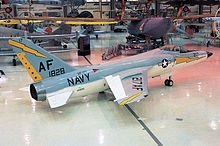THE PILGRIM
Member
Subject: 13 Phantom Facts
13 Facts About The F-4 Phantom II
The F-4 made its first flight in 1958, and it was a true feat of thrust over aerodynamics. Check out these 13 facts about the F-4 Phantom II:
1) With a total of 5,195 built, the F-4 was the most numerous U.S. supersonic jet ever assembled.
2) Early wind tunnel tests revealed lateral instability in the F-4's design. To overcome this problem, engineers needed to add five degrees of dihedral to the wings, but instead of redesigning the central titanium section, they added 12 degrees of dihedral to the outer portion of the wing, averaging five degrees across the entire span.
3) The tail was designed with 23 degrees of anhedral, which improved high AOA control.
4) In some versions, the nose strut could extend up to 20" to increase AOA for carrier take offs.
5) The F-4 was not short on speed. The Air Force's first Phantom II exceeded Mach 2 on its first flight in 1963.
6) Built as a long-range radar interceptor, the F-4 originally did not have an internal cannon.
7) The F-4 was the first fighter in the world to have a Look Down Shoot Down radar.
8) In 1959, the F-4 set an altitude record of 98,557'. Cmdr. Lawrence Flint, Jr. accelerated to Mach 2.5 at 47,000', zoom climbed at 45 degrees, then shut down the engines to glide to the peak altitude. He restarted the engines in his descent.
9) In 1962, the F-4 set a time-to-climb record of 9,000 meters (29,500') in just over 61 seconds.
10) The F-4 was the only jet flown by both the Blue Angels and the Thunderbirds.
11) A total of 528 F-4s were lost during the Vietnam War.
12) The U.S. Air Force still uses F-4s as target drones.
13) At 63' long and with over 35,000 pounds of thrust, it is no wonder that the F-4 was nicknamed, "The triumph of thrust over aerodynamics.
13 Facts About The F-4 Phantom II
The F-4 made its first flight in 1958, and it was a true feat of thrust over aerodynamics. Check out these 13 facts about the F-4 Phantom II:
1) With a total of 5,195 built, the F-4 was the most numerous U.S. supersonic jet ever assembled.
2) Early wind tunnel tests revealed lateral instability in the F-4's design. To overcome this problem, engineers needed to add five degrees of dihedral to the wings, but instead of redesigning the central titanium section, they added 12 degrees of dihedral to the outer portion of the wing, averaging five degrees across the entire span.
3) The tail was designed with 23 degrees of anhedral, which improved high AOA control.
4) In some versions, the nose strut could extend up to 20" to increase AOA for carrier take offs.
5) The F-4 was not short on speed. The Air Force's first Phantom II exceeded Mach 2 on its first flight in 1963.
6) Built as a long-range radar interceptor, the F-4 originally did not have an internal cannon.
7) The F-4 was the first fighter in the world to have a Look Down Shoot Down radar.
8) In 1959, the F-4 set an altitude record of 98,557'. Cmdr. Lawrence Flint, Jr. accelerated to Mach 2.5 at 47,000', zoom climbed at 45 degrees, then shut down the engines to glide to the peak altitude. He restarted the engines in his descent.
9) In 1962, the F-4 set a time-to-climb record of 9,000 meters (29,500') in just over 61 seconds.
10) The F-4 was the only jet flown by both the Blue Angels and the Thunderbirds.
11) A total of 528 F-4s were lost during the Vietnam War.
12) The U.S. Air Force still uses F-4s as target drones.
13) At 63' long and with over 35,000 pounds of thrust, it is no wonder that the F-4 was nicknamed, "The triumph of thrust over aerodynamics.
Last edited:

